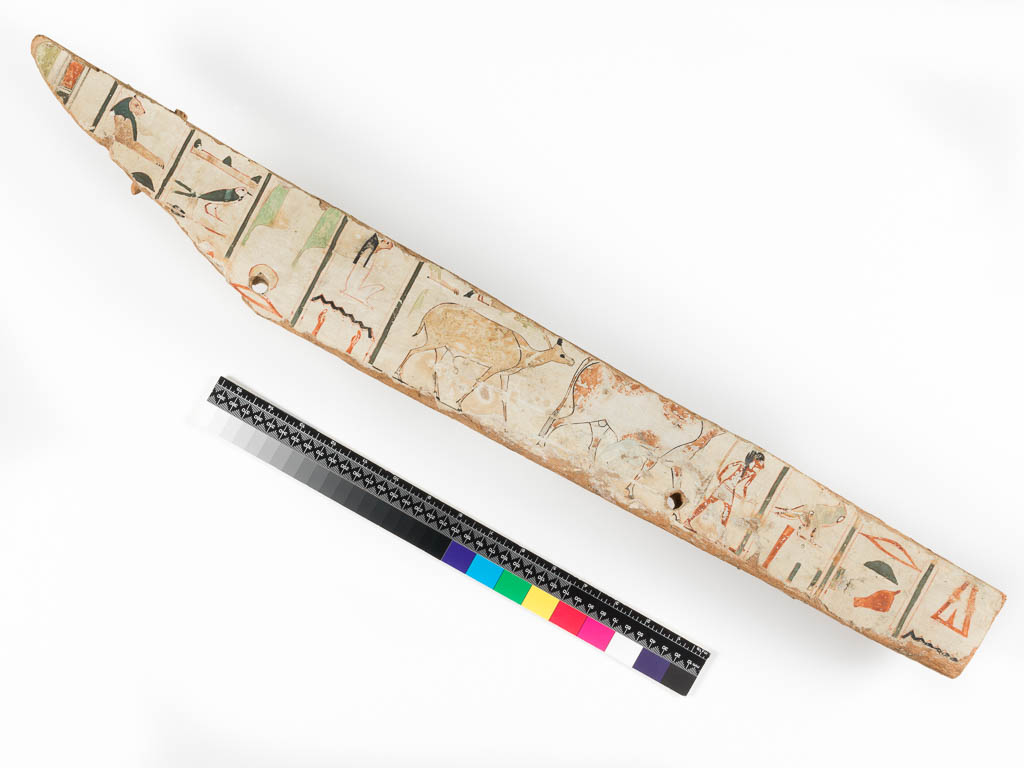Look and Think activities should take 5 -10 minutes.
Do activities might take longer depending on the task and how creative you are feeling!
Fragment from the coffin of Wepwawetemhat
Egypt, c. 1975-c.1790 BCE, E.W.66a
Pigment on wood, Height 8.9cm x width 75.3cm
Look
Can you see the fingerprints of the artist? Do you think these were accidental or used to create an effect in their artwork? Look closely!
Think
The ancient Egyptians measured using their arms, hands and fingers known as: cubits, spans, digits. This fragment comes from a coffin. It is 75cm long.
Try and work out how long this fragment is in cubits or digits using page 6 of this resource made by the Egypt Centre: Museum of Egyptian Antiquities.
Do
Why not experiment with finger painting yourself and see what effects you can create?
A snail’s trail? A hippo’s leathery skin? A cheetah’s spotty fur? The scales of a snake?

If you don’t want to get messy, seal paint in a clear bag and use your fingers to make lines, dots and swirls without getting messy. Hair gel also works really well instead of paint.
This wooden fragment from the coffin of a master physician (doctor), Wepwawetemhat, bears the fingerprints of the artist who decorated it nearly four thousand years ago. Amid hieroglyphs painted with a reed brush, stands an animal, whose fur is textured and patterned by fingertips pressed into the brown earth pigment.
The fragment of wood comes from the bottom edge of a rectangular, box-type coffin dating from about 1975-1790 BCE and was originally attached to another piece of wood in our collection from the same coffin (E.W.66a). Based on the text and decoration it is likely to have come from the site of Asyut, a large and important settlement in what we call Middle Egypt, which is in between Cairo and Luxor. The decoration includes scenes from offering rituals and involves a human figure, which is extremely rare in decoration on coffins of this period. We only know the names of very few doctors from Ancient Egypt that makes this object even more interesting.
This object forms part of our ‘Human Touch’ exhibition. The exhibition explores the sense of touch in human experience, creativity, and society. A crucial part of our Sensual/Virtual season, the show will include works spanning two thousand years and from across the globe, works that demonstrate the importance of touch to our sense of self and in creating and communicating emotion.
Download this Look Think Do: Coffin fragment of Wepwawetemhat as a PDF or a Word document.